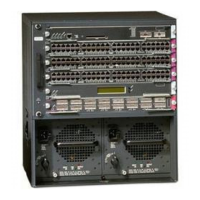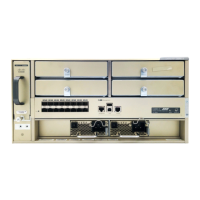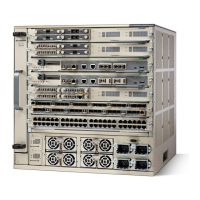11-3
Catalyst 6500 Series Content Switching Module Configuration Note
OL-4612-01
Chapter 11 Configuring Firewall Load Balancing
Understanding How Firewalls Work
Note When you configure Layer 3 load balancing to firewalls, use source NAT in the forward direction and
destination NAT in the reverse direction.
Types of Firewall Configurations
The CSM supports these two firewall configuration types:
• Dual-CSM configuration—Firewalls are located between two CSMs. The firewalls accept traffic
from one CSM and send it to a second CSM for load balancing to servers or return to the requesting
device.
• Single-CSM configuration—Firewalls accept traffic from a CSM and send it back to the same CSM
for load balancing to servers, or they can return traffic to the requesting device.
IP Reverse-Sticky for Firewalls
The CSM currently supports sticky connections. Sticky connections ensure that two distinct data flows
originating from the same client are load balanced to the same destination.
Load-balanced destinations are often real servers. They may be firewalls, caches, or other networking
devices. Sticky connections are necessary for the proper functioning of load-balanced applications.
These applications utilize multiple connections from the same client to a server. The information
transferred on one connection may affect the processing of information transferred on another
connection.
The IP reverse-sticky feature is configured for balancing new connections from the same client to the
same server, as described in “Configuring Reverse-Sticky for Firewalls” section on page 11-24. This
feature is especially important in the case of buddy connections, such as an FTP data channel or a
streaming UDP data channel.
CSM Firewall Configurations
The CSM can support these firewall configurations:
• Stealth firewalls for dual CSM configurations (Figure 11-1)
• Regular firewalls for dual CSM configurations (Figure 11-2)
• Regular firewalls for single CSM configurations (Figure 11-3)
• Mixed firewalls (stealth and regular) for dual CSM configurations (Figure 11-4)
In Figure 11-1, traffic moves through the firewalls and is filtered in both directions. The figure shows
the flow from the Internet to the intranet. On the path to the intranet, CSM A balances traffic across
VLANs 5, 6, and 7 through firewalls to CSM B. On the path to the Internet, CSM B balances traffic
across VLANs 15, 16, and 17 through firewalls to CSM A. CSM A uses the VLAN aliases of CSM B in
its server farm, and CSM B uses the VLAN aliases of CSM A in its server farm.

